
Translating and End-Times Doctrines
Translating prophecies about the ‘end times’ presents unique challenges. They have highly symbolic language and are coupled with deeply entrenched theological interpretations.
All this means that translators’ choices can significantly shape how readers understand these verses.
Bias can creep in very easily, whether that’s the translator’s own understanding influencing their choice of words, or the translator’s sponsor (such as a Church) requiring the words to be translated in a certain way.
This page explores several key verses where translation decisions can be biased in verses relevant to the end-times.
Our List
- Matthew 24:3 — Presence, Coming, or Appearance?
- Matthew 24:3 — End of the Age or End of the World?
- Matthew 24:29 — Immediately After That Time the Sun Goes Dark?
- Matthew 24:34 — This Generation?
- 1 Thessalonians 4:17 — Heaven or the Air?
- 1 Thessalonians 5:3 — Peace and Security?
- Revelation 20:5 — When Did the Rest of the Dead Come to Life?
- Daniel’s Old Greek Version
- Land or Earth?
- Revelation — Is it Inspired?
Note that there are other verses relevant to end-times doctrines. However, those are more about interpretation; this page is about translation bias.
Matthew 24:3 — Presence, Coming, or Appearance?

How we choose to translate the Greek word παρουσία (parousia), frequently found in discussions of Christ’s return (e.g., Matthew 24:3, 27, 37; 1 Thessalonians 4:15), can significantly influence how readers understand the text.
It’s commonly translated as ‘coming,’ but it can also mean ‘presence’ or ‘arrival.’
This distinction is important:
1. ‘Presence’ vs. ‘Coming’:
- Translating parousia as ‘presence’ has been used by Adventist groups to support the idea of an extended, invisible presence of Jesus before a final, visible manifestation.
- Translating it as ‘coming’ or ‘arrival’ doesn’t support that idea.
2. The Technical Meaning of Parousia:
As noted in lexicons like Thayer’s, parousia was often a technical term for an official visit or the arrival of a person of high rank, such as a king or emperor — a ‘royal visit.’ This implies a visible, personal appearance and arrival, not necessarily an invisible state of being.
3. Biblical Descriptions of Parousia:
Further contextual clues within the Bible itself point towards a visible event.
For instance, Matthew 24:27 describes the parousia of the Son of Man:
‘For just as the lightning comes from eastern parts and shines over to western parts, so the parousia of the Son of Man will be.’
Lightning that flashes across the entire sky is a highly visible, unmistakable phenomenon, suggesting the parousia would be visible too.
4. The Aramaic Perspective:
The Aramaic equivalent is ܡܐܬܝܬܟ (metitak) or similar forms from its root. This word straightforwardly means ‘coming’ or ‘arrival.’
Significantly, as the Comprehensive Aramaic Lexicon shows, it can even describe ‘the coming of the Huns to the Roman realm’ — a military invasion — or the ‘comings of illnesses’ (plagues).
These are distinctly visible, impactful events, not an unseen presence. If the original concept (spoken in Aramaic) was simply ‘coming’ in this active sense, then interpreting the Greek parousia as an invisible presence is an entirely alien concept.
The translation bias can arise in a few ways:
-
Overemphasizing ‘Presence’ for Doctrine: If translators (or interpreters) lean heavily on ‘presence’ to support a pre-existing doctrine of an invisible return, they may not give sufficient weight to the ‘royal visit,’ the biblical descriptions of its visibility (like the lightning), or simple ‘arrival/coming’ aspects.
-
Obscuring Nuance with ‘Coming’: While ‘coming’ is a valid translation, consistently using it without explaining the ‘royal visit’ nuance of parousia can strip the term of some of its intended grandeur and official character. It was more than just someone showing up; it was an event.
Readers are often unaware that parousia had this specific connotation of a significant, visible arrival, much like a state visit today, and that biblical descriptions support this visibility. Furthermore, the Aramaic understanding of a straightforward ‘coming’ or even ‘invasion’ contrasts sharply with notions of a prolonged, invisible presence.
Translators have a responsibility to convey these nuances, perhaps through footnotes, so readers can appreciate the full range of meaning and not be guided towards one particular theological interpretation just by one particular word choice.
Our Editor Comments:
The idea that parousia means an ‘invisible presence’ seems to be a classic case of reading a theological concept back into a word, rather than letting the word’s actual usage guide the theology. When you see it meant a king showing up (or even an army invading in the case of the Aramaic word that Jesus may have actually spoken), the ‘invisible’ part doesn’t fit at all — never mind the example given in the text of lightning flashing across the sky!
Further Reading
- Read our translator note on Matthew 24:3 (which discusses parousia)
- Strong’s Greek 3952: parousia (coming, presence, arrival)
- CAL Lexicon: mˀty (coming, invasion)
Matthew 24:3 — End of the Age or End of the World?

Many Bibles translate the disciples’ question in Matthew 24:3 something like this:
‘Tell us, they said, ‘when will this happen, and what will be the sign of your coming and of the end of the world?‘ (Based on NIV, with ‘world’ commonly used)
Right away, that phrase ‘end of the world’ catches the eye. However, there are several problems with this that most translations don’t tell their readers.
It’s not ‘world’, it’s the ‘age’!
The Greek word translated here as ‘world’ is αἰῶνος (aiōnos). A more precise rendering of aiōnos is ‘age,’ ‘eon,’ or a long, defined period. So, a better translation would be ‘end of the age.’
This distinction is huge!
‘End of the world’ immediately steers readers towards a cataclysmic, global annihilation. ‘End of the age,’ however, points to the conclusion of a specific era—perhaps the Jewish age of Temple worship, which Jesus had just prophesied would be destroyed (Matthew 24:1-2).
This is a classic example of how a single word choice by translators can dramatically skew a reader’s understanding.
But hang on, there’s an even more basic question here:
Were the words ‘of your coming and of the end of the age’ even part of the original text?
There are several reasons to suspect not:
1. Missing from Other Gospels
The phrases — ‘your coming’ (Greek: parousia) and ‘the end of the age’ (syntéleia toû aiōnos) — are oddly missing from the parallel accounts in Mark 13:4 and Luke 21:7.
In Mark and Luke, the disciples’ question is more straightforward:
‘Tell us, when will these things happen? And what will be the sign that they are all about to be fulfilled?’ (Mark 13:4).
If the disciples had truly broadened their query to include Jesus’ future arrival and the very ‘end of the world’ (or age), wouldn’t Mark and Luke have recorded such sensational details?
2. Was it Out of Context?
The disciples’ question in Matthew 24:3 directly followed Jesus’ startling declaration that the magnificent Temple in Jerusalem would be utterly demolished, with…
‘…not one stone here will be left on another.’ (Matthew 24:2).
Their immediate and natural concern, therefore, would likely have been about when this shocking destruction would occur and what signs would precede it. The sudden introduction of concepts like ‘your coming’ and ‘the end of the age’ seems to shift the focus quite dramatically. While Jesus does subsequently discuss the future arrival of the ‘Son of Man’ in his discourse, that doesn’t mean the apostles asked about it specifically.
3. Matthew’s Unique Textual History:
As detailed in our translator note, the Gospel of Matthew has more variations among ancient manuscripts than any other. This is made worse by the fact we only have fragments of Matthew from before the 4th century AD.
Consequently, phrases or details that are unique to Matthew — especially those that only appear in Matthew — are often looked at with suspicion, because if they were added very early, we’d have no way of confirming it.
If the words aren’t original, it’s plausible they originated as a marginal note or gloss. Imagine a teacher or preacher, perhaps in the decades after AD 70 when Jerusalem had been destroyed, studying this passage. They might have made a note in the margin suggesting that the disciples’ question about the Temple’s fate also carried implications for Jesus’ ultimate return and the close of the age.
A later scribe, copying the manuscript, might have mistaken this marginal comment for part of the original text and incorporated it. This kind of accidental addition, known as an interpolation, is quite common, and usually correctly very easily if enough manuscripts exist to compare against.
Our Editor Comments:
The phrase is clearly regarding the end of the age, or the current era, not the ‘end of the world’.
Also, if this phrase is indeed a later addition, it massively undermines many modern interpretations. Therefore, it’s the moral duty of a translator to let readers know about these issues. To do anything less would be, in my view, gross negligence.
Further Reading
- Read our translator note on Matthew 24:3
- Read our translator note on interpolations
- Read our translator note on ‘age’
Matthew 24:29 — Immediately After That Time the Sun Goes Dark?
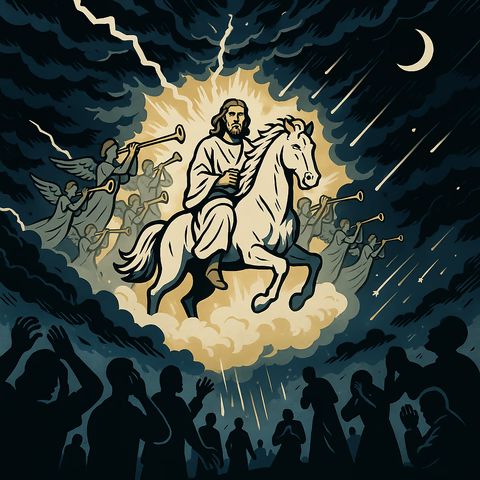
The verse Matthew 24:29 is a pivotal part of Jesus’ prophecy, often vital to certain interpretations of when certain apocalyptic events are expected to happen.
Most Bibles translate the beginning of this verse something like:
‘Immediately after the tribulation of those days…’
However, there are a couple of important points that many translations don’t tell their readers.
First, what about that phrase, ‘Immediately after that difficult time’?
It makes it sound like one series of events will immediately follow the other. However, this specific phrase isn’t found in the parallel accounts of this discourse in Mark 13 or Luke 21.
Now, this is a problem because we, as translators, have noted that Matthew has more corruptions in the text than any other gospel… But it’s not surprising. According to ancient writers, it was the first gospel written (modern academics think Mark was, but the ancients disagreed).
Could it be a later addition?
When a text is passed around and copied by a tiny, persecuted community, with few copies in circulation, it’s easier for errors and competing versions to appear than it would be in later years, when there are many copies to compare against.
So when a vital (timing-related) detail like this is missing from the parallel accounts, it naturally increases the possibility that it could be a later addition, but added too early for us to detect. If it was added just a few decades after this gospel was completed, we’d have no way of knowing, because we only have tiny fragments from that early time.
If it was added, it likely wasn’t a deliberate attempt to corrupt the text. No, not at all. It’s most likely an interpolation of a marginal note added by a teacher or preacher, which later got moved (‘transposed’) into the text upon copying. In other words, it was probably an accident.
Such things are not unusual. Several other interpolations have been found and corrected by Bible translators. But those occurred later, when we have surviving manuscripts to compare against. Very early interpolations, however, are extremely difficult to detect, because we have nothing but scraps and fragments from the earlier decades.
So we don’t know this is an interpolation… There is no way to know (we don’t have enough early manuscripts). But it remains a possibility, even if small, and future manuscript discoveries will hopefully clear up the matter.
Why is it important?
It’s important to mention this, because some Christian groups have sensational interpretations of Jesus’ Olivet Discourse, and they usually prefer Matthew’s version. Why? Because the differences in wording support their view, while the Mark and Luke versions don’t! And if it turns out that this one vital difference is a later addition, then their whole interpretation falls apart.
So we’re not saying that the words ‘Immediately after the tribulation of those days’ are definitely fake or wrong; we’re just saying that there are reasonable suspicions that they could be. And readers have a right to know this and to decide for themselves.
The Sun Growing Dark
Second, and just as importantly, what comes next is a direct quotation! Jesus says:
‘The sun will grow dark,
The moon won’t give out its light,
The stars will fall from the skies,
And the powers of the heavens will be shaken.’
These dramatic words aren’t unique to Jesus; he’s quoting Isaiah 13:10, which predicts the fall of the ancient Babylonian Empire. Yet, how many Bibles clearly mark this as Jesus quoting Isaiah?
Not many!
By failing to show that Jesus is quoting Isaiah, translations can mislead readers into thinking these are entirely new, original predictions by Jesus. Most readers have no idea that he’s quoting Isaiah. His original listeners, the disciples, would have very likely known and understood that he was quoting Isaiah. Such prophecies were common knowledge, and read in the synagogues regularly.
That’s important because, as far as we know, when the Babylonian Empire fell, the sun didn’t go dark, the moon didn’t stop shining, and the stars didn’t fall out of the sky. No, because these are all symbolic images of political powers being toppled. Yes, they’re not literal.
Yet because Bible translations don’t let readers know that Jesus is quoting Isaiah, many readers think that Jesus is literally saying that the sun will stop shining, and so on. Some preachers then use this to paint sensational pictures of the end-times, frightening their congregations. Yet they never reveal that these words are symbolic language, originally used to predict the Babylonian Empire falling in the 6th century BC.
Our Editor Comments:
It’s truly amazing how many interpretations of Jesus’ prophecy are based just on Matthew’s version because Mark’s and Luke’s versions don’t contain the specific parts they need to make their case.
The literal heavenly signs and the words ‘immediately after’ are very important to them because they’ll say things like:
‘Well these grand celestial events didn’t happen ‘immediately after’ AD 70, so this whole prophecy must be talking about our time today!’
Then they go on to apply all of Matthew 24 to our modern era, whipping up fear and anxiety in their congregations about a coming apocalypse. They may try to apply modern identities to the Roman Empire, the Jews, and Jerusalem — claiming they’re prophetic symbols for the USA, Russia, China, the Catholic Church, the United Nations, or something else.
And there’s another group that benefits from all this: critics of Christianity!
They use those words to claim that Jesus is a failed prophet, because no such things happened ‘immediately after’ AD 70. They also don’t see that he was quoting Isaiah’s prophecy about the fall of Babylon, simply using the same prophetic symbols for political change.
Bible translators have a moral duty to give readers the full picture — including reporting when certain words may not be original. Yet it goes further: even formatting quotes to look like quotes is vitally important! Failure to do these things in Matthew 24 has caused all kinds of problems.
Matthew 24:34 — This Generation?

One of the most hotly debated phrases in the Olivet Discourse is Jesus’ statement in Matthew 24:34. While most English Bibles translate it as something like:
‘Truly I tell you, this generation will certainly not pass away until all these things have happened.’
This translation hinges on interpreting the Greek word γενεά (genea) as ‘generation.’ However, considering Jesus likely spoke Aramaic, the Aramaic word choice, שַׁרְבְּתָא (sha'urbetah), offers crucial insight and points to a broader meaning.
The translation bias here is significant:
-
The Greek genea: While ‘generation’ (implying a ~30-40 year timeframe) is a possible meaning, genea also carries senses like ‘family,’ ‘clan,’ ‘race,’ ‘a people,’ ‘an age,’ or ‘a kind/type of people.’
-
The Aramaic sha'urbetah: This word, found in Aramaic versions of Matthew, typically means ‘family,’ ‘tribe,’ ‘nation,’ or ‘people.’ The Aramaic word for a time-defined ‘generation’ is different (darah) and is used elsewhere when that specific meaning is intended. Since Aramaic was Jesus’ everyday language, sha'urbetah may well reflect his original term.
By selecting the narrow English word ‘generation,’ translators deceive readers into thinking that Jesus was specifically starting a countdown clock, saying that all the events he described must occur within the lifespan of his immediate audience.
Now, if it was all fulfilled by Jerusalem’s destruction in AD 70, then it did indeed happen within the lifespan of (most of) his immediate audience.
But just because that’s what happened, does not mean that’s what he revealed would happen.
‘Generation’ has several problems:
-
It erases ambiguity: Both the Greek genea and the Aramaic sha'urbetah allow for broader meanings than just a time-limited ‘generation.’ Insisting on ‘generation’ implies that Jesus was speaking in a very specific way, giving everyone a very specific timeline, when he probably wasn’t.
-
Neglects Aramaic context: Given Jesus spoke Aramaic, the meaning of sha'urbetah (‘family, tribe, people, nation’) should be given at least equal, if not primary, consideration. Early Aramaic-speaking Christians likely understood Jesus’ words differently from the ‘40-year countdown’ interpretation.
-
Post-event interpretation: Choosing ‘generation’ because Jerusalem fell within ~40 years interprets the text through later events, rather than translating the word normally. It’s putting the cart before the horse.
The strong preference for ‘generation’ in many translations, often without any footnote acknowledging the wider meaning of genea (or the crucial Aramaic alternative sha'urbetah that Jesus may have actually said), misleads readers.
It suggests Jesus gave a very specific, short-term timeline, which then becomes a foundational text for certain modern prophetic speculations. It also creates a puzzle, as readers may wonder why this ticking clock is not mentioned again.
Our Editor Comments:
Using ‘generation’ is putting words in Jesus’ mouth. It’s unlikely that he meant to give such a specific meaning - never mind a countdown clock! If he had, it would have been repeated by his disciples (‘Don’t you know that Jesus said this would all happen within one generation?’).
Besides, Jesus spoke Aramaic, and the Aramaic text uses a term primarily understood as ‘people,’ ‘tribe,’ or ‘race’ (meanings also possible for the Greek!), so the whole ‘countdown’ idea is an anachronism.
It’s totally wrong for translators to choose words based on later knowledge of events.
I should also mention how utterly tiresome it is to constantly hear people say, ‘The Greek word that Jesus used was…’ I honestly don’t know what it will take to get these people to stop saying that.
Most famously, the Jehovah’s Witnesses taught that the end would come within one ‘generation’ of 1914. When the end failed to arrive, they created their own definition of the word to mean longer lengths of time.
A lesser-known story is that of the World Mission Church of God in South Korea. They once taught that the end of the world would come in 1988, exactly 40 years (one ‘generation’) after the foundation of modern Israel in 1948. It’s said that a few thousand adherents went up to the top of a mountain to await the rapture.
Further Reading
1 Thessalonians 4:17 — Meeting in Heaven or in the Air?

A key passage for ‘rapture’ doctrines is 1 Thessalonians 4:17. Many interpret this as believers being taken away to heaven. However, a closer look at the language used, especially in the Greek, raises significant questions.
In our Bible, 1 Thessalonians 4:16-17 says:
‘the Lord himself will come down from the sky and give the command in the voice of the highest messenger [of God] and with God’s trumpet…
‘Then those who’ve died in the Anointed One will be the first to be resurrected.
‘And after that, the living (those of us who are still left at that time) will be snatched into the clouds (en nephelais) along with them for [a] meeting (apantēsin) with the Lord in the air (eis aera)…
‘And thereafter, we’ll always be with the Lord.’
The actual wording challenges many common interpretations:
-
Location Specificity: Why are believers described as being taken ‘into the clouds’ and meeting the Lord ‘in the air’? Both ‘clouds’ and ‘air’ typically refer to Earth’s atmosphere, not the celestial dwelling of God. In contrast, that is often referred to with the Greek word οὐρανός (ouranos), which isn’t mentioned here.
-
The Nature of the ‘Meeting’: The Greek word translated ‘meeting’ is ἀπάντησις (apantēsis). This term was often used in a somewhat technical sense for the formal welcome extended by a delegation going out to meet a visiting dignitary or newly arrived official, and then escorting them back into their city. This implies that believers go out to meet the descending Lord to welcome Him back to Earth, not to depart with Him to heaven. He is arriving; they are His welcoming party.
-
Ambiguity of ‘Always with the Lord’: The passage concludes, ‘so we’ll always be with the Lord.’ But where will they always be with Him? In the air? In heaven? Or on Earth, following His return? The text doesn’t say. If they meet Him in the air to welcome His return to Earth, then ‘always with the Lord’ would naturally mean being with Him on Earth, but we don’t know.
The Aramaic texts say almost exactly the same thing, using words for being ‘in the clouds’, going ‘towards’ the Lord in the ‘air’.
The common translation choice of simply ‘meet’ for apantēsis, without explaining its cultural nuance of formally welcoming an arriving official, leaves readers in the dark. This omission, coupled with not mentioning that ‘air’ and ‘clouds’ are not the normal terms for heaven, can mislead readers into thinking that this is a ‘rapture to heaven’ scenario.
The language very likely points to an entirely different event: the welcoming of Christ at His return to Earth.
The translation issue here is that translators don’t explain this in footnotes or appendices.
Our Editor Comments:
Millions of people are misled by this verse and by preachers who use it. But Bible translators and publishers are also implicated. They should be putting footnotes or something in the text to make it clear, but they don’t. Many churches would never buy Bibles that have such information, because it directly contradicts their doctrine.
Personally, I consider this a form of lying by omission.
Further Reading
1 Thessalonians 5:3 — Peace and Security?

A frequently quoted verse in end-times discussions is 1 Thessalonians 5:2-3. Most Bibles translate it as something like:
‘the day of the Lord will come like a thief in the night. While people are saying, ‘There is peace and security,’, then sudden destruction will come upon them…’ (ESV)
The Greek words here are εἰρήνη (eirēnē) and ἀσφάλεια (asphaleia). While ‘peace and security’ (or ‘peace and safety’) is a common and perfectly valid translation, these terms have broader possible meanings.
- Eirēnē can mean ‘peace,’ but also ‘well-being’ or ‘health.’
- Asphaleia can mean ‘security’ or ‘safety,’ but also ‘certainty’ or ‘reliability.’
As you can see, ‘peace and security’ is just one of many possible translations. Many translations say ‘peace and safety’ instead. ‘Well-being and safety’ is another valid option. However, there’s more. We always defer to the Aramaic text when it diverges from the Greek, as it may reflect earlier understandings.
That text uses the words שלם (selam) and שינא (sayna). As detailed in our translator note, it leads us to read it as ‘well-being and peace/tranquility.’
That’s why our translation puts it like this:
‘the Lord’s Day is coming [unexpectedly] like a thief does at night… While they’re speaking of well-being and peace! And then ruin will come upon them…’
Why does this matter?
Translating it as ‘peace and security’ can lead some to look for a specific, future global announcement or treaty of ‘peace and security’ as a direct precursor to ‘the end.’ This can fuel very particular prophetic timetables.
However, if the original emphasis was just a general state of ‘well-being and tranquility’ (or simply ‘everything’s fine!’), then Paul might not be giving a unique prophetic sign. Instead, he could simply be echoing Jesus’ well-known ‘thief in the night’ analogy (Matthew 24:43-44), emphasizing that destruction will come when people feel complacent and least expect it.
Our Editor Comments:
The phrase ‘peace and security’ has become a trope in many end-times circles, with people constantly scanning headlines for any global leader mentioning these exact words. But this is cherrypicking in the extreme.
There are many different ways to translate this verse, and the Aramaic text gives even more options.
It’s very possible that Paul was just repeating Jesus’ ‘thief in the night’ teaching, not giving some prophecy about a specific future political slogan. Indeed, why would such an important prophecy be some throwaway line in a random letter? Surely something so important would be repeated elsewhere? Or perhaps stated by Jesus himself? After all, it does (according to them) trigger the end of the world!
In fact, I strongly suspect that some modern Bible translations deliberately choose to translate this phrase as ‘peace and security’ (instead of any of the other options) because it’s a slogan modern politicians use. They’re trying to put the cart before the horse, trying to insert a ‘prophecy’ into the Bible that was probably never there in the first place.
It’s probably because the United Nations charter says one of its primary goals is ‘international peace and security.’ Therefore, when certain Bibles were translated, they chose to word it in exactly the same way to ensure the ‘prophecy’ was created.
The best example of this is the Jehovah’s Witnesses and their New World Translation.
Their theology states that political and religious leaders, led by the United Nations, will soon make a ‘declaration of peace and security.’ This, they say, will trigger a series of events, ending with Armageddon, when Jesus will kill all non-Jehovah’s Witnesses.
They get this ‘peace and security’ declaration from this verse. Or do they?
They started translating their Bible in 1947 — about six years after the United Nations charter was written, and two years after it was signed. They previously used the King James Version and the American Standard Version, which both say ‘peace and safety,’ not ‘peace and security.’
I suspect that their translators’ choices were informed by what a lawyer wrote in the UN founding document.
Further Reading
Revelation 20:5 — When Did the Rest of the Dead Come to Life?

The timing of when ‘the rest of the dead’ come to life in Revelation 20 is absolutely crucial for various views on the millennium and the resurrection.
Many translations translate Revelation 20:5 like this:
‘But the rest of the dead lived not again until the thousand years were finished. This is the first resurrection.’ (Based on KJV)
That bolded phrase is a cornerstone for many interpretations. It clearly states that one group is resurrected, a thousand years pass, and then the ‘rest of the dead’ come to life. This directly supports pre-millennial interpretations that envision two distinct resurrections separated by the ‘millennial reign.’
But there’s a problem.
This is where translation bias — or rather, a bias in manuscript selection and transparency — comes into focus. As our note on Revelation 20:5 explains, there’s a significant here:
The phrase, ‘The rest of the dead didn’t come to life until the end of the thousand years,’ is missing from some of the most ancient and important manuscripts of Revelation.
Specifically:
- It’s not found in the Codex Sinaiticus, which is the oldest complete Greek manuscript of the New Testament, dating to the early 300s.
- It’s also absent from the Khabouris Codex, an ancient Aramaic (Syriac Peshitta) manuscript of the New Testament, also considered very old (though its exact dating is debated, many place it between the 4th and 7th centuries). It’s an important independent witness to the text.
When such a significant statement is missing from these key early witnesses, it raises serious questions about its authenticity. It’s quite possible that this phrase was not part of the original text, but was added later.
How could this happen? It might have started as a marginal comment — perhaps a preacher’s note clarifying their interpretation of the sequence — which was then mistakenly incorporated into the main text by a later copyist. Such interpolations have been fixed in other parts of the biblical text.
The implications are great:
-
If the phrase is original: It strongly supports a chronological gap of a thousand years between the resurrection of one group of believers and ‘the rest of the dead.’
-
If the phrase is a later addition: The text simply mentions ‘the first resurrection’ and then speaks of the rest of the dead without explicitly stating when they live again in relation to the thousand years. This opens up different interpretative possibilities.
Yet most modern translations include this phrase, often without a footnote to indicate the significant manuscript evidence against it. This lack of transparency is a form of bias. Readers are presented with a text that seems definitive, unaware that there’s any issue whatsoever.
In the 2001 Translation, we’ve chosen to gray out these words to show readers that they have a doubtful authenticity.
Our Editor Comments:
I think that some translators are incredibly condescending to their readers. ‘Don’t you worry your pretty little head about it. You don’t need to know about this. It’s not important. Just read the text and move on.’
Further Reading
Daniel’s Old Greek Version
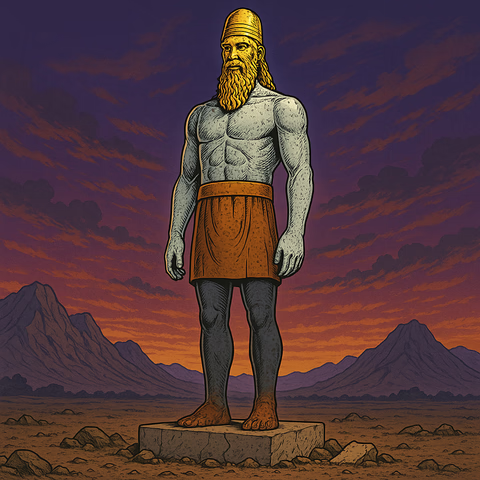
Most readers are familiar with the version of Daniel based on the Hebrew/Aramaic Masoretic Text (Masoretic Text). However, there’s another, much older Greek translation known as the ‘Old Greek’ (‘Old Greek’) version of Daniel. And the differences aren’t just minor!
The Old Greek version of Daniel, translated in the late centuries BC, was widely used by Greek-speaking Jews and early Christians. However, because it diverged noticeably from the later standard Hebrew text, it fell out of favor and was largely replaced by a new Greek translation by scholar Theodotion.
But what if the Old Greek, despite its differences, actually preserved some readings closer to Daniel’s original writings? Or what if the Hebrew/Aramaic text itself underwent changes after the Old Greek translation was made?
This is where the translation bias comes in, because most Bible translations don’t tell you anything about it. Most Christians have never heard about any of this before! Yet the Old Greek version presents some of Daniel’s key prophecies (especially those relied upon in modern end-times doctrines) in a different light.
We detail the differences exhaustively in our series on the Differences in the Old Greek Version of Daniel.
- The ‘Old Greek’ version is more historically accurate.
- Some prophetic passages read very differently.
Here’s some examples.
Chapter 2
-
Stone’s Impact:
- In the Masoretic Text, the stone ‘filled’ the earth.
- In the Old Greek, the stone ‘violently struck’ the earth. This ‘Old Greek’ reading suggests a sudden, forceful establishment of God’s kingdom, not a gradual one.
-
‘Last Days’:
- The Masoretic Text says the vision is of events ‘after this.’
- The Old Greek says the vision is of events in the ‘last days.’
Chapter 4
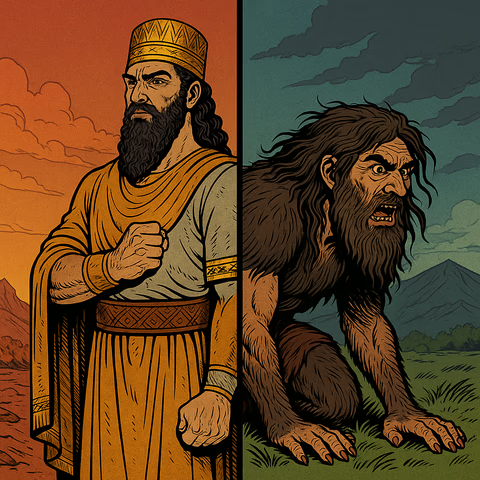
- ‘Seven Times’ vs. ‘Seven Years’:
- The Masoretic Text’s indefinite ‘seven times’ (4:16, 23, 25, and 32) has been used in some speculative end-times calculations.
- The Old Greek’s direct mention of ‘seven years’ (e.g., 4:13b and 4:29) reduces this ambiguity, pointing more towards a simple fulfillment upon King Nebuchadnezzar, with nothing more implied.
Chapter 7
-
The Aggressiveness of the Final Horn/King:
- The Masoretic Text states this king will be ‘different‘ from the previous ones.
- The Old Greek describes the final dominant horn (king) as being ‘worse than the others.’ This provides a better clue to its identity.
-
Destruction of the Fourth Beast:
- The Masoretic Text uses more general terms like ‘destroyed and killed’ (7:11 and 7:26).
- The Old Greek describes the fourth beast’s demise in terms like being ‘defiled‘ (7:26) and ‘beaten to death‘ (7:11). This describes a more gradual and internal decay leading to the fourth empire’s fall (often identified as Rome), contrasting with a sudden, singular destructive event possible in the Masoretic.
Chapter 8

Throughout this chapter, the Old Greek version of the ram and goat vision often aligns more specifically with historical events of the Maccabean era. Here are some examples:
-
Historical and Geographical Specificity:
- The Masoretic Text says the little horn’s agression is pointed ‘towards the glorious [land]‘ (i.e., Israel).
- The Old Greek says its aggression is towards the ‘north.’ This affects how the prophecy is mapped geographically.
-
The 2,300 Evening-Mornings and Sanctuary:
- The Masoretic Text states the sanctuary will be ‘made righteous/vindicated/restored,’ which is a broad term.
- The Old Greek text aligns well with the duration of the desecration and rededication of the Temple during the Maccabean Revolt. The Dead Sea Scrolls align with the Old Greek’s statement that the temple will be ‘cleansed,’ rooting it more firmly in past events.
-
Identity and Actions of the Antagonist:
- The Masoretic Text states the horn ‘exalted himself as high as the Prince of the host,’ which some interpret messianically.
- In the Old Greek, after the sanctuary’s defilement, it says ‘until the commander-in-chief will rescue the captives,’ which bares no resemblence to the events of AD 70, nor to today.
-
The end of the prophecy differs significantly:
- The Masoretic Text says: ‘he shall stand up against the Prince of princes; but he shall be broken without human hand,’ suggesting divine intervention against a supreme figure. This has stronger eschatological overtones often applied to an ‘Antichrist’ figure.
- The Old Greek says: ‘he will stand up to destroy men and he’ll form [a] hand-picked group to carry out his plans!’ This is a more direct and specific description.
-
Possible Later Tampering in the Masoretic Text?:
- Our examination of this chapter suggests one possibility: the Masoretic Text may have been deliberately updated to make it sound more like the events of AD 70 (or to another messiah). In contrast, the Old Greek text appears to fit the events of the Maccabean crisis.
Chapter 9
-
Nature of the 70 Years:
- The Masoretic Text says the 70 years were for the ‘desolations of Jerusalem.’
- The Old Greek says the 70 years were for the ‘reproach’ on ‘the land and JeruSalem.’ This detail spoils Millerite chronologies that attempt to predict the end of the world.
-
Understanding of the Seventy Weeks:
- The Masoretic Text lists six outcomes, including ‘to seal up vision and prophecy,’ implying concealment rather than understanding or fulfillment.
- The Old Greek lists seven outcomes, including ‘to understand the vision’ and ‘to fulfill the visions and prophet.’ The Old Greek aligns with the idea that the prophecy was understood and fulfilled (e.g., by early Christians regarding Jesus), while the Masoretic Text suggests it would remain sealed even beyond that.
Chapter 11
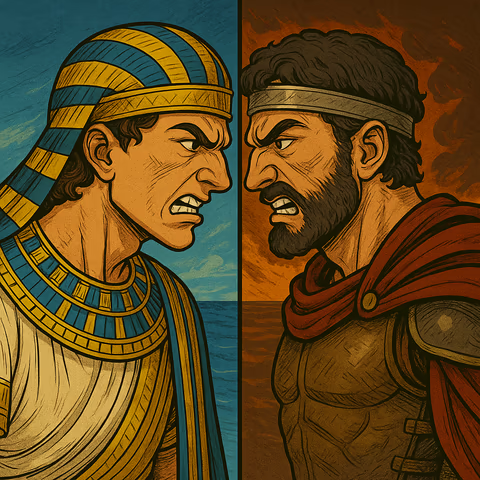
-
Consistent Naming of Egypt:
- The Masoretic Text uses the more general title ‘King of the South.’
- The Old Greek explicitly names ‘Egypt’ throughout the entire prophecy. This firmly anchors the prophecy in the well-documented Ptolemaic-Seleucid conflicts, making it harder to re-identify the ‘King of the South’ as some later or modern entity.
-
Peace or Destruction?:
- The Masoretic Text says the king will enter the province ‘peaceably.’
- The Old Greek says the king will enter the province ‘lay waste to a city.’ This is a harsher depiction, aligning more with what actually happened when Antiochus IV entered JeruSalem.
-
The ‘God of Fortresses’:
- The Masoretic Text has the willful king honoring a ‘god of fortresses’ (a deity difficult to identify with Antiochus IV’s known promotion of Zeus, but a key verse people use today to identify a future ‘Antichrist’).
- The Old Greek reads entirely differently, saying ‘He will move from his position.’ It has nothing to do with any ‘god of fortresses.’
-
Explicit Mention of the Romans:
- The Masoretic Text uses the ambiguous term ‘ships from Chittim,’ which requires interpretation and allows for re-application to other future powers.
- The Old Greek directly states, ‘The Romans will come and they’ll drive him back and harshly rebuke him,’ clearly indicating that everyone believed it referred to what famously happened to Antiochus IV Epiphanes.
These differences generally make the ‘Old Greek’ version of Daniel 11 read more like a prophecy with a clear and detailed fulfillment in ancient history, thereby making it more difficult to apply it to modern ideas about the ‘end-times’.
Chapter 12
-
Michael’s Role and the Distress (Daniel 12:1):
- In the Masoretic Text, the distress will be the worst since ‘there was a nation.’
- In the Old Greek, the distress is the worst since ‘they [the Israelites] came into being.’
The Masoretic’s more general ‘since there was a nation’ allows for broader, less historically-grounded interpretations, including applications to modern times. The Old Greek does not.
-
Resurrection and Outcomes (Daniel 12:2):
- The Masoretic Text mentions two main outcomes: some to everlasting life, and some to shame and everlasting contempt.
- The Old Greek describes three outcomes: some to age-long life, some to reproach, and others to be ‘permanently scattered/dispersed (diaspora) and suffer eternal shame.’
The Old Greek’s explicit mention of a permanent ‘diaspora’ challenges interpretations that foresee a complete restoration of all Israelites to Israel. It also contradicts ideas that the prophecy is talking about a future paradise — as it would be illogical for a paradise to contain a permanent diaspora of Israelites.
- Conditions at ‘The Time of the End’ (Daniel 12:4):
- The Masoretic Text says the words are sealed until the time of the end when ‘many shall run to and fro, and knowledge shall increase.’
- The Old Greek says the words are sealed until ‘many people go mad and the land is filled with wrongdoing.’
These are starkly different descriptions. The Masoretic Text’s ‘knowledge shall increase’ is often interpreted by modern readers as referring to technological advancement or increased understanding of prophecy, while the ‘Old Greek’ paints a picture of widespread societal and moral decay.
Our Editor Comments:
The Old Greek of Daniel is far more historically accurate than the Masoretic Text. If you read our full catalog of differences, you can see them all. It absolutely does have translation issues in some places, but overall, it’s a very good text and invaluable for uncovering the original Daniel.
Some argue that the Aramaic/Hebrew version of Daniel is the only one worth considering, and that the Old Greek is just a bad translation that should be ignored. Some even say it was mistranslated deliberately to fit some agenda. However, the Old Greek often (not always) agrees with the fragments of Daniel that we have from the Dead Sea Scrolls, so it can’t be so easily dismissed.
Actually, the real truth is this: Certain people and their churches have wild interpretations of Daniel that they apply to the modern day (It’s America! Or Russia! Or Donald Trump!). All of these are based on the Masoretic Text. Thus, when they see that the Old Greek version either damages or destroys their interpretation, they’re really unhappy about it.
Then, rather than admitting they may be wrong (or at least, less certain) they instead try to find some excuse to dismiss the entire Old Greek text. They’ll give distorted, misleading, and entirely one-sided reasons for why the Old Greek is wrong, leaving out all the evidence that it may well preserve some original readings from an older version (or vorlage) of Daniel.
Bible translators made the situation worse. Not only do they fail to mark certain differences in footnotes, they don’t mention the Old Greek at all. Most Jews and Christians who stumble across our website are shocked to see ‘Daniel (Old Greek)’ listed as a separate book. They had no idea it existed!
Further Reading
Land or Earth?

One important, but often overlooked, translation choice that affects end-times prophecies is how to translate the Hebrew word אֶרֶץ (erets) and the Greek word γῆ (gē).
Both terms have a broad range of meaning, depending on the context:
- The entire planet Earth.
- A specific country or region (often Israel/Judaea).
- The ground or soil.
So when these words appear in prophecies, the translator’s decision to use ‘earth’ or ‘soil’ (implying a global scope) or ‘land’ (implying a local or regional scope) is highly significant. It can completely change how a prophecy reads!
For example, when Jesus speaks of ‘all the tribes of the earth/land’ mourning at his coming (Matthew 24:30), translating it as ‘earth’ could support interpretations of a global visible return affecting everyone worldwide.
Translating it as ‘land,’ however, could point to a fulfillment more localized to Israel/Judea, perhaps pointing to AD 70, or to some other future event in the Middle East.
It’s really inappropriate for a translator to decide what the original speaker or writer meant, and then force that interpretation on the reader, turning his opinion into ‘what the Bible says’.
Many famous Old Testament prophecies use ‘erets’ or ‘gē":
- The ‘Day of the Lord’ bringing desolation upon the ‘earth/land’ (e.g., Isaiah 13:9, Joel 1:15-2:2).
- Promises of the righteous inheriting the ‘earth/land’ (e.g., Psalm 37:11, 29; Isaiah 60:21).
- Descriptions of cosmic disturbances affecting the ‘earth/land’ (e.g., Haggai 2:6).
Translators who see end-time events as globally all-encompassing will tend to prefer ‘earth’ or ‘soil.’ Those who see certain prophecies as already fulfilled on Israel/Judah in some way, or applying to the modern State of Israel in the future, might prefer ‘land.’
The bias arises when translators choose one over the other without telling the reader that the other meaning could also be true.
Of course, ‘land’ and ‘soil’ could also be interpreted as all the land (or soil) on the whole planet. That could be true. However, it’s not right for a translator to put ‘the earth’ simply to make the text sound more like it agrees with his or her own personal interpretation (or that of the sponsoring church).
Our Editor Comments:
Some apocalyptic groups and writers take a lot of Old Testament prophecies whose context clearly applies to Israel, Judah, Edom, Assyria, Babylon, Persia, Greece, and other nations, and try to make them apply to today or the near future. There’s barely a prophecy that isn’t taken out-of-context to support an end-times interpretation by somebody.
Such people almost universally prefer ‘earth’ over ‘land’ or ‘soil.’
Bible translators have a moral duty to tell the reader, perhaps with footnotes, when there’s an ambiguity in the text… Especially when the difference is literally between a piece of land and an entire planet! But most simply impose their preferred view onto the text and leave it at that.
Further Reading
Revelation — Is it Inspired?

It might surprise many readers, but the Book of Revelation wasn’t universally accepted as scripture by early Christians.
For centuries, especially in the Eastern churches, its authenticity and divine inspiration were seriously questioned, and some prominent Church Fathers even warned against reading it. Some early Christians even wrote entire books (now long-lost) to refute the text.
The translation bias issue here isn’t about specific words or phrases within Revelation itself, but rather the omission of this critical historical context in most modern Bibles.
You’ll rarely find footnotes, prefaces, or appendix entries discussing its contested reception or the reasons why many early Christians (who were closer to the apostolic era) either doubted it or rejected it entirely.
This lack of information is, in itself, deceptive. Lies by omission. It misleads readers into thinking that the book’s authority is undisputed, as if it’s no different to Matthew or Mark.
- Article: Early Christian Rejection of Revelation.
Our Editor Comments:
In the same Bible translations that have footnotes warning of alternative readings and manuscript variations, you’ll find no mention at all that an entire book was widely rejected as a fraud — by the people who lived when it was written, no less.
Yet again, we see Bible translators either being curtailed by their Church sponsors, or failing to disclose facts that don’t support their personal opinions.
I note that modern so-called ‘restorationist’ movements accept Revelation wholeheartedly, holding some of the wildest interpretations of any group. It seems that their ‘restoration’ of original Christianity comes with exceptions.
Translating Bias
 Translating and Authority of the Church
Translating and Authority of the Church Translating and the Trinity Doctrine
Translating and the Trinity Doctrine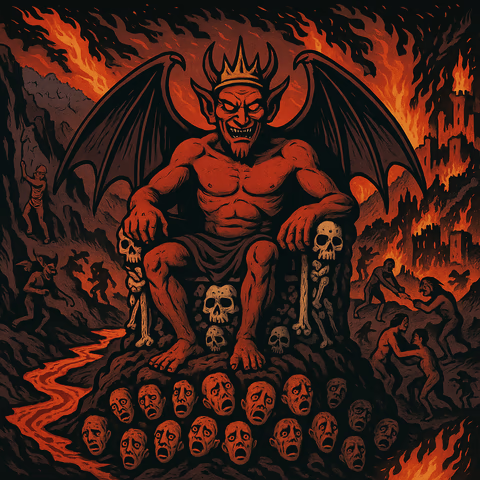 Translating and Afterlife Doctrine
Translating and Afterlife Doctrine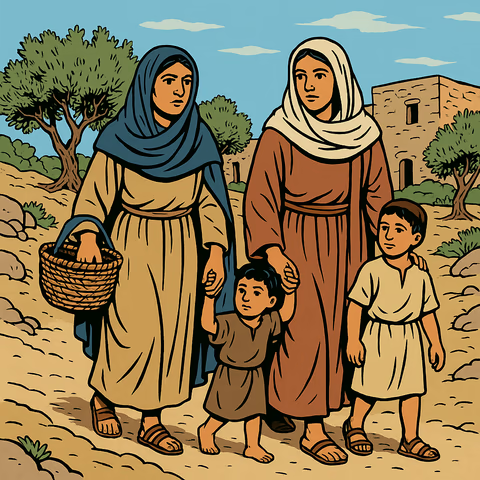 Translating and Texts About Women
Translating and Texts About Women Translating and End-Times Doctrines
Translating and End-Times Doctrines Translating and Traditional Readings
Translating and Traditional Readings
Also see our Articles index and our About section.